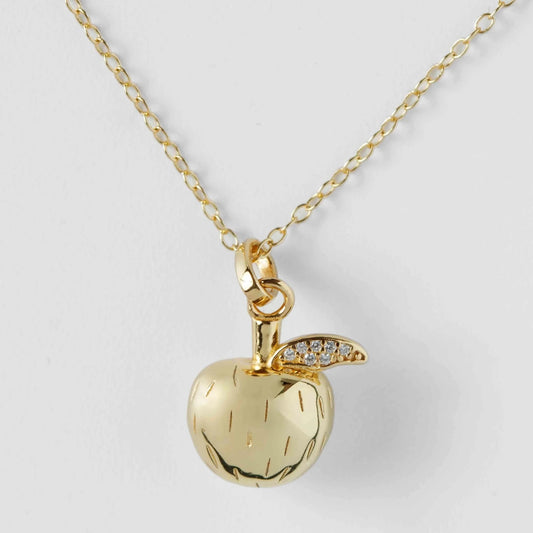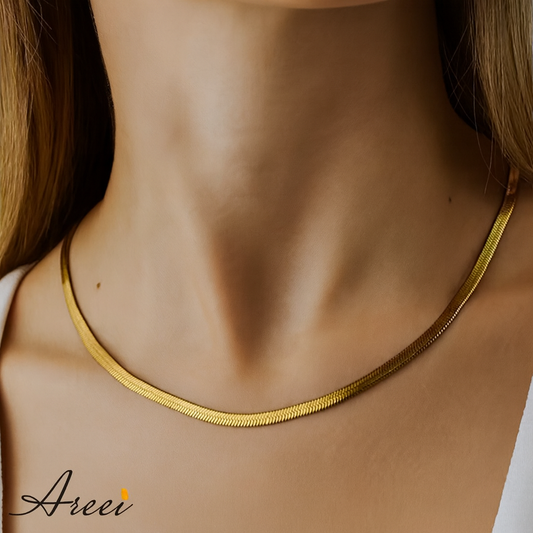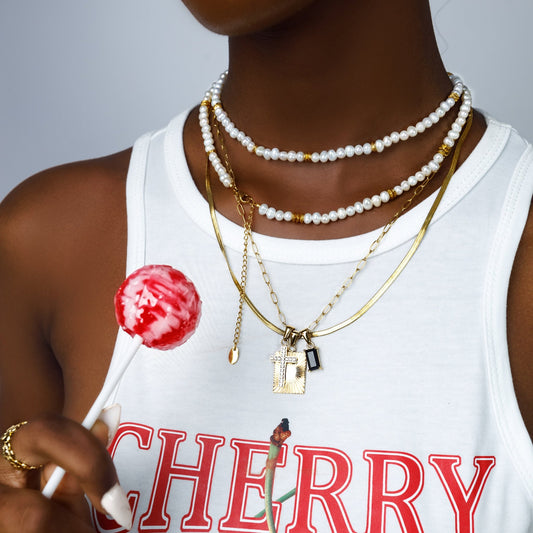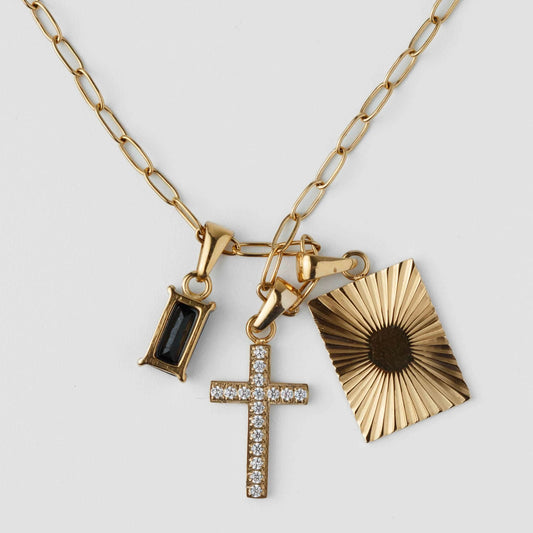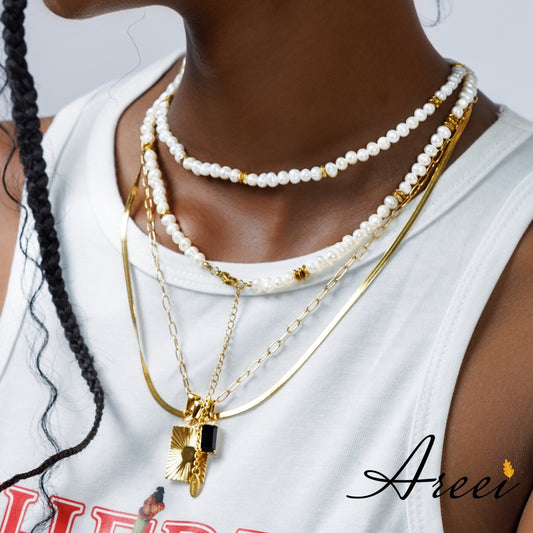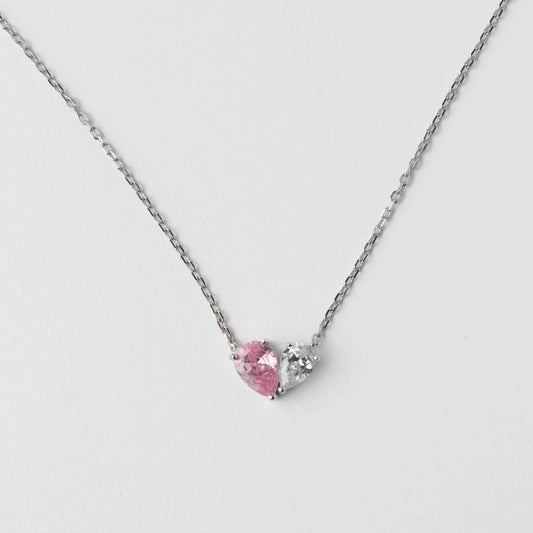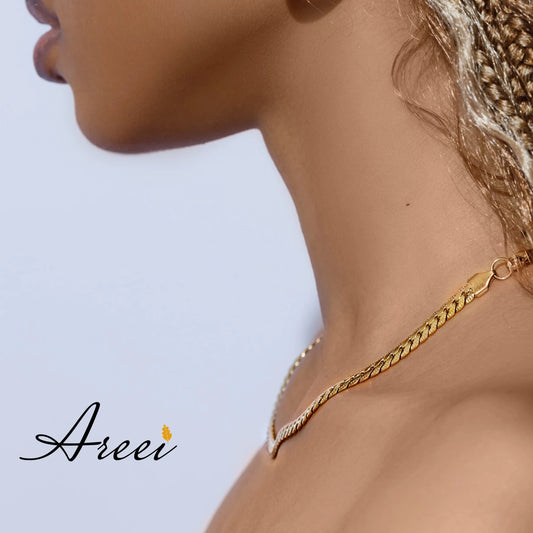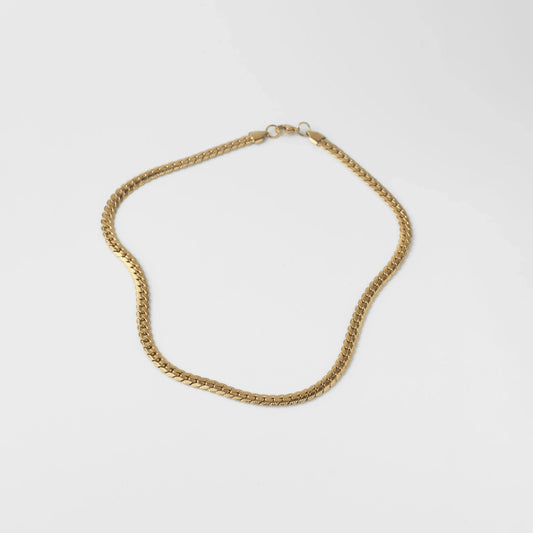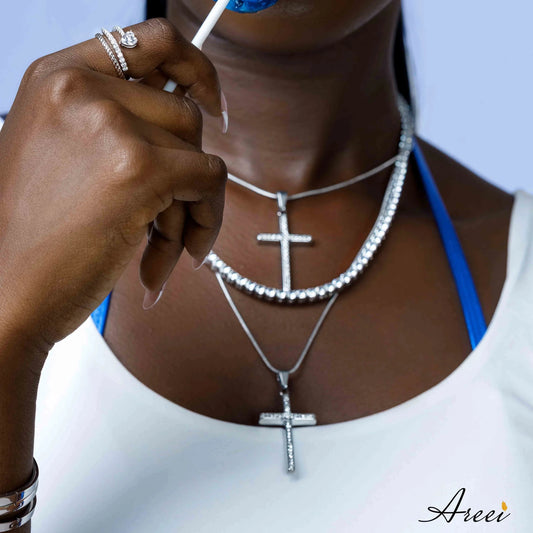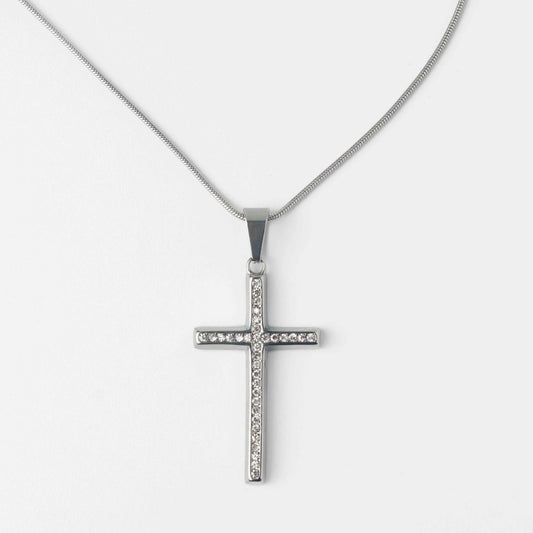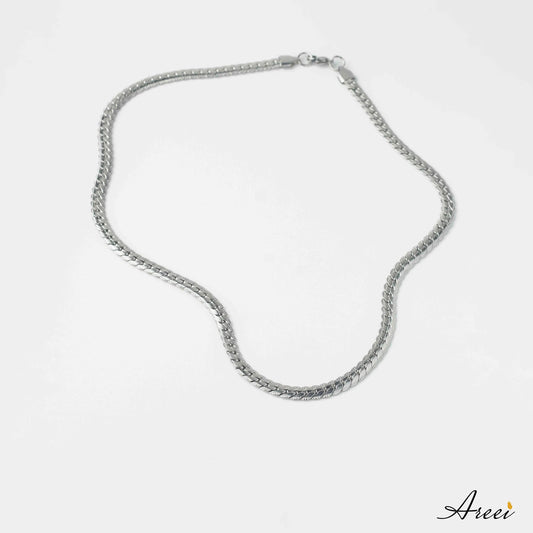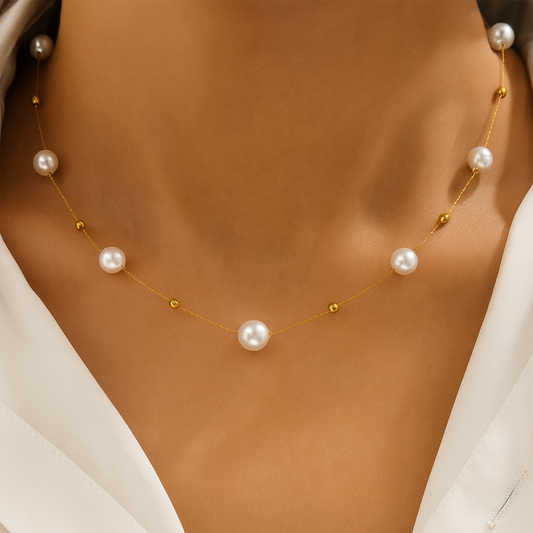Flute Gold Necklace from Areei
If you’ve ever taken off your favourite or not-so-favourite necklace and then discovered you have some green marks on your skin, do not panic; you’re just experiencing a common reaction between metals and your body. This guide covers all you need to know about these reactions, the causes, how to prevent them, and everything related.
Why Does My Necklace Turn My Neck Green?
The strange green discolouration on your skin is caused by a chemical reaction called oxidation. When certain metals in your jewellery collection come into contact with the acids, be it from your sweat, oils, or any other substance (like lotions or perfumes), they corrode and release compounds. These compounds cause the green stains on your skin.
What's it called when your skin turns green from jewellery?
This mysterious greenish discolouration is usually called "jewellery staining" or "metal staining"—though jewellers sometimes call it "the green effect." The scientific term behind this common phenomenon is a process called "oxidation," which like we mentioned earlier is caused by jewelleries undergoing chemical change when exposed to air, moisture and the natural acids on your skin.
Does real silver turn green?
Pure silver (also called fine silver, which is 99.9% silver content) generally maintains its integrity against your skin and rarely causes that telltale green discolouration that many associate with cheaper jewellery. With sterling silver, however, which contains 92.5% silver and 7.5% other metals (mainly copper), can sometimes be prone to have its copper content leave subtle green marks, especially in hot weather or on people whose skin chemistry runs more acidic. Although sterling silver more commonly develops a dark tarnish rather than turning green.
How to Stop Your Necklace from Turning Your Neck Green
To stop your necklace from leaving green marks, green marks often involve either creating a barrier between your skin and the metal or choosing jewellery made from metals less likely to cause reactions.
How to prevent your skin from turning green from jewellery
- Apply a clear nail polish barrier: Paint the areas of jewellery that come in contact with your skin with clear nail polish to form a barrier.
- Keep skin dry: Water speeds up the oxidation reaction, so try to keep your neck and jewellery dry.
- Remove jewellery during activities that cause sweating: Remove your necklace when exercising or during hot weather.
- Avoid wearing perfumes or lotions where jewellery comes in contact: Chemicals in these products can accelerate metal reactions.
- Clean your jewellery regularly: Remove built-up oils and residue that contribute to oxidation.
What kind of necklace won't turn my neck green?
Look for necklaces made from these:
- High-quality stainless steel
- Platinum
- Pure gold (14k or higher)
- Titanium
- Niobium
- Rhodium-plated jewellery
What metal will not turn skin green?
Metals that are least likely to cause green discolouration include:
- Platinum (expensive but hypoallergenic)
- Fine silver (99.9% pure silver)
- Gold with higher karats (18k or 24k)
- Titanium
- Niobium
- Surgical-grade stainless steel
Silver Cross Diamond Necklace from Areei
Is Green Neck from Jewellery Permanent?
Well the good news is that the green discolouration on your skin from jewellery is not permanent. The stain is simply a residue that sits on the surface of your skin and will eventually wash away or fade away from your skin naturally so you don’t have to worry about that. Unlike tattoos, these metallic marks are simply surface-level deposits that have not penetrated further into your skin.
Is it safe to wear jewellery that turns green?
For most people, wearing jewellery that turns your skin green is safe and doesn't indicate an allergic reaction. However, if you experience itching, rash, or irritation along with the green colour, you might be having an allergic reaction to the metal (usually nickel) and should stop wearing that piece.
The difference between a harmless green stain and a harmful reaction:
- Harmless stain: Just green discolouration with no discomfort
- Potential allergic reaction: Green discolouration accompanied by itching, redness, rash, or irritation
How to Clean and Restore Green-Stained Jewellery
When your jewellery develops green oxidation, proper cleaning can restore its appearance and reduce skin staining.
How do you get green off a necklace?
- Mild soap solution: Wash the necklace with warm water and mild dish soap.
- Baking soda paste: Create a paste with baking soda and water, gently rub it on the green areas with a soft cloth, then rinse thoroughly.
- Lemon juice: The acidity in lemon juice can help dissolve green oxidation. Apply with a cloth, then rinse well.
- White vinegar soak: Soak the necklace in white vinegar for 15-30 minutes, then rinse thoroughly.
How to remove green oxidation from metal?
For more stubborn green oxidation on copper or brass jewellery:
- Salt and vinegar: Mix equal parts salt and white vinegar to create a paste, apply to the green areas, let sit briefly, then rinse well.
- Commercial metal cleaners: Use products specifically designed for your metal type.
- Professional cleaning: For valuable pieces, consider professional jewellery cleaning services.
How to Keep Jewellery from Tarnishing
Preventing tarnish extends the life and appearance of your jewellery while reducing green marks on your skin.
How to stop sterling silver from turning green?
- Store properly: Keep silver jewellery in anti-tarnish bags or cloth pouches.
- Apply rhodium plating: Consider having your sterling silver pieces rhodium-plated at a jeweller.
- Use silica gel packets: Store these with your silver to absorb moisture.
- Regular polishing: Use a silver polishing cloth to maintain shine and remove early tarnish.
How to stop jewellery from tarnishing?
- Store in airtight containers: Limit exposure to air and moisture.
- Add anti-tarnish strips to your jewellery box.
- Remove jewellery before showering, swimming, or applying products.
- Wipe jewellery with a soft cloth after wearing to remove oils and moisture.
- Apply jewellery protectant sprays designed to create a barrier against tarnish.
What jewellery is waterproof?
No jewellery is truly "waterproof," but these materials are more water-resistant:
- Solid gold (14k or higher)
- Platinum
- Titanium
- High-quality stainless steel
- Silicone
Remember that even water-resistant metals can be affected by chemicals in pool water, hot tubs, or the ocean, and gemstone settings may become loose with water exposure.
By understanding what causes your jewellery to turn your skin green and taking preventative measures, you can continue to enjoy your favourite pieces without unwanted discolouration.


